Editorial Board
Editorial Board Members
- Peter Andersen, Denmark
- Ritesh Agarwal, USA
- Xiaoyi Bao, Canada
- Daniel J. Blumenthal, USA
- Martin J Booth, United Kingdom
- Tarik Bourouina, France
- Xingdan Chen, China
- Zhigang Chen, China
- Kin Seng Chiang, Hong Kong, China
- Myong Yong Choi, South Korea
- Daping Chu, UK
- Juergen Czarske, Germany
- Keshav M. Dani, Japan
- Fei Ding, Germany
- Pietro Ferraro, Italy
- Andrew Forbes, South Africa
- Wolfgang Freude, Germany
- Andrea Galtarossa, Italy
- Malte C. Gather, UK
- Francisco J. Garcia-Vidal, Spain
- Marc P. Georges, Belgium
- Harald Giessen, Germany
- Anderson S L Gomes, Brazil
- Qihuang Gong, China
- Min Gu, China
- Chunlei Guo, USA
- Minghui Hong, Singapore
- Xiaojun Jia, China
- Xiangqian Jane Jiang, UK
- Li Jin, China
- Diaa Khalil, Egypt
- Christian Koos, Germany
- Lin Li, UK
- Quan Li, China
- Xingde Li, USA
- Di Liang, USA
- Natalia Litchinitser, USA
- Jin Liu, China
- Wenqing Liu, China
- Guilu Long, China
- Yongfeng Lu, USA
- Qingming Luo, China
- Dongge Ma, China
- Hervé Maillotte, France
- Andries Meijerink, The Netherlands
- Valentin Antonovich Orlovich, Belarus
- Wolfgang Osten, Germany
- Aydogan Ozcan, USA
- Yuwen Qin, China
- Chengwei Qiu, Singapore
- Min Qiu, China
- Aleksandar D. Rakić, Australia
- Daniel Razansky, Switzerland
- Manijeh Razeghi, USA
- Junsuk Rho, Korea
- Perry Ping Shum, China
- Qinghai Song, China
- Chang-Pu Sun, China
- Joseph J. Talghader, USA
- Chuanshan Tian, China
- Karl Unterrainer, Austria
- Paul Urbach, The Netherlands
- Jiaqi Wang, China
- Lijun Wang, China
- Qijie Wang, Singapore
- Xiaojun Wang, USA
- Clive Woods, USA
- Yunfeng Xiao, China
- Peng Xue, China
- Kiyoul Yang, USA
- Xiaocong Yuan, China
- Xuejun Zhang, China
- Mengjian Zhu, China
Peter Andersen
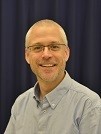 Technical University of Denmark, Denmark
Technical University of Denmark, Denmark
Email: peta@dtu.dk
Peter E. Andersen received his MSc.E.E. in 1991 and his Ph.D. in 1995 from the Technical University of Denmark. Dr. Andersen is with DTU Health Tech at the Technical University of Denmark, where he is group leader of the Biophotonic Imaging Group, and the Head of DTU Health PhD School. From 2006-2013, he was Research Professor at Department of Atomic Physics, Lund University, Sweden. He has more than 20 years of research experience within biophotonics, biomedical optics, light source technology, multimodal imaging concepts comprising optical coherence tomography, multiphoton tomography and nonlinear microscopy, and translation of these modalities into clinical applications, including endoscopic applications. Dr. Andersen leads or has led several large-scale European collaborative research programs within the above-mentioned topical areas.
Dr. Andersen has published more than 225 peer-reviewed journal/conference papers within the above-mentioned topics, 12 book chapters, and one book as co-editor. He holds four patents, of which three have been transferred to industry. Dr. Andersen is co-founder and co-inventor of Norlase ApS based in Denmark – a company that manufactures compact laser-based medical devices for applications in ophthalmology.
Currently, Dr. Andersen is editorial board member of Light: Science and Application, Journal of Biomedical Optics, associate editor of Journal of Biophotonics, and he served Optics Letters as Topical Editor from 2008-2012 and Deputy Editor from 2012-2018. He is serving on, or has served on, several international conference committees as Program or General Chair, including CLEO (2016-2019), and Conference Committee Member at Photonics West.
Dr. Andersen is SPIE Fellow (2015) and OSA Fellow (2015).
Ritesh Agarwal
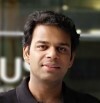 University of Pennsylvania, USA
University of Pennsylvania, USA
Email: riteshag@seas.upenn.edu
Prof. Ritesh Agarwal is a Srinivasa Ramanujan Distinguished Scholar and Professor in the Department of Materials Science and Engineering at the University of Pennsylvania where he has been leading his research group (Nanoscale Phase Change and Photonics Group) since 2005 (http://agarwal.seas.upenn.edu/). He received his integrated BS/MS degree from the Indian Institute of Technology, Kanpur in 1996, and a master’s degree from the University of Chicago in 1997. He earned his PhD in physical chemistry from the University of California at Berkeley in 2001 under the supervision of Prof. Graham Fleming researching liquid and protein solvation and photosynthesis via multiple-pulse coherent nonlinear optical techniques. After completing his PhD., he was a postdoctoral fellow at Harvard with Prof. Charles Lieber where he studied the optoelectronic properties of semiconductor nanowires. He started at Penn in 2005 as an Assistant Professor and was promoted to full Professor in 2014. Some of his key research accomplishments include nanowire injection lasers (Nature 2003) and avalanche photodiodes (Nature Materials, 2006) during his postdoctoral tenure, and from Penn, demonstration of 1D polaritons (PNAS 2011), room temperature polariton lasing in nanoscale cavities (Science Advances, 2019), nanoscale phase change memory (Nature Nanotechnology 2007; Science 2012, Nature Comm 2017), large Purcell enhancements in plasmonic nanocavities (Nature Materials 2011), optical emission from Si nanocavities (Nature Photonics, 2013), all-optical switching in nanowires (Nature Nanotechnology 2012), photon spin dependent photocurrents in Silicon (Science 2015), spatially-dispersive photogalvanic effect in Weyl semimetals (Nature Materials, 2019), photocurrent detection of the OAM of light (Science, 2020) tunable on-chip OAM microlaser (Science 2020), on-chip strain photodetector (Nature Photonics, 2020), topological polaritons (Science 2020) electric-field controlled nonlinear optical switches (Nature Communications 2017), optical nonlinear polarimetry of polar domains in phase change materials (Nature Communications, 2018) optoelectronics of 2D excitonpolaritons (Nano Letters 2015, 2016, 2017) and tunable optical metasurfaces (Nano Letts 2017 and 2018). He has been a recipient of the NSF CAREER award in 2007, NIH Director’s New Innovator Award in 2010, SPIE Nanoengineering Pioneer Award in 2014, and the George H. Heilmeier Award for Faculty Excellence in 2022. He was elected a Fellow of the Optical Society of America in 2020. His research has been extensively covered in the media such as BBC, TIME magazine, National Geographic, Scientific American, Newsweek, MIT Technology Review, ABC News, Materials Today, Nano Today, Hindustan Times, Telegraph (Kolkata), Comcast Cable Network Channel and Philadelphia Inquirer. In 2017, he became the director of a Multi University Research Initiative on Phase Change Materials for Photonics, leading a team of six PIs from five universities. In the last 15 years, he has raised ~$20 million in extramural research funding (mostly from NSF, DoD and NIH) including multiple instrumentation grants to enhance materials characterization, optics and photonics related research facilities at Penn.
Please click here to download detailed biography
Xiaoyi Bao
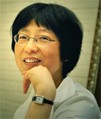 Physics Department, University of Ottawa
Physics Department, University of Ottawa
FRSC, FOSA, FSPIE
E-mail: xbao@uottawa.ca
Xiaoyi Bao is the Canada Research Chair professor (Tier I) in Fiber Optics and Photonics in the Physics Department, University of Ottawa, Canada. Her research interests range from study of nonlinear effects in fibers to make distributed fiber sensors for various physical parameters, random fiber lasers, to realize optical logic gates for optical signal processing, fabrication of nano- and micro-fibers using hybrid fibers for sensors and lasers, as well as high resolution optical spectrometer, and instrumentations. Dr. Bao has published over 250 refereed journal and 210 conference proceeding papers, 9 book chapters, and 6 IPs/patents from her group have been transferred to industries. She is a fellow of Royal Society of Canada (RSC), OSA and SPIE. She has received following awards and honors since 2010: honorary Doctor Degree from the University of Lethbridge (Canada) in 2015, the Canadian Association of Physics (CAP) Medal for Outstanding Achievement in Industrial and Applied Physics (2013); CAP-INO Medal for Outstanding Achievement in Applied Photonics (2010). She has served as the Topic Editor for Optics Letters (2011-2014) and Applied Optics (2005-2008), Guest editor for IEEE JLT special issue “Fiber Optics Sensors” in 2012, Associate Editor for Photonics Sensors (2011-2014), and Editorial board member for International Journal of Optics (2008-2011).
Daniel J. Blumenthal
 University of California Santa Barbara
University of California Santa Barbara
Department of Electrical and Computer Engineering
Email: danb@ucsb.edu
Web: https://ocpi.ece.ucsb.edu
Dr. Blumenthal is a Distinguished Professor in the Department of Electrical and Computer Engineering at UCSB, Director of the Terabit Optical Ethernet Center and heads the Optical Communications and Photonics Integration group. He is Co-Founder of Packet Photonics Inc. and Calient Networks. He holds 23 patents and has published over 480 papers in the areas of optical communications and optical packet switching, integrated stabilized ultra-narrow linewidth lasers and reference cavities, ultra-low loss silicon nitride and InP photonic integrated circuits, optical gyro sensors, integrated atom cooling photonics, quantum and nano-photonics, and microwave photonics. He is co-author of Tunable Laser Diodes and Related Optical Sources (New York: IEEE–Wiley, 2005).
Dr. Blumenthal is the 2020 recipient of the OSA C. E. K. Mees Medal. He is recipient of a Presidential Early Career Award for Scientists and Engineers (PECASE), a National Science Foundation Young Investigator Award and an Office of Naval Research Young Investigator Program Award. Blumenthal received the Ph.D. degree from the University of Colorado, Boulder (1993), the M.S.E.E. from Columbia University (1988) and the B.S.E.E from the University of Rochester (1981).
He is a Fellow of the National Academy of Inventors (NAI), Fellow of the IEEE and Fellow of the Optical Society of America (Optica).
Tarik Bourouina
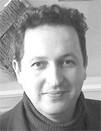 ESIEE Paris, ESYCOM-Lab, Université Paris-Est, France
ESIEE Paris, ESYCOM-Lab, Université Paris-Est, France
E-mail: tarik.bourouina@esiee.fr
Tarik Bourouina was born in 1967. He holds a Master of Science (Physics), a Master of Engineering (Electronics), the Ph.D. degree (1991), and the Habilitation Degree (2000) from Université Paris-Sud, Orsay. Since 1988, his entire research career was devoted to the field of MEMS and Lab-On-Chip micro-instrumentation. He started research at ESIEE Paris in 1988 among the pioneers in MEMS-based silicon microphones, which he extended to acoustic-based gyroscopes. He had several significant contributions in the area of optical MEMS and micro-photonics, among which the smallest MEMS-based FTIR Optical Spectrometer, jointly developed with Si-Ware-System and Hamamatsu Photonics, which was awarded best product of the year of Japan in 2013 and the 2014 Prism award on photonics innovation in 2014. Dr. Bourouina was also actively involved in the development of several companies launched by his former students and colleagues from ESIEE Paris, which include Si-Ware Systems, Fluidion, Memscap and MEMS-Schlumberger.
Dr. Bourouina took several academic positions in France and in Japan, at the Université Paris-Sud Orsay, at the French National Center for Scientific Research (CNRS) and at The University of Tokyo. Since 2008, he is the representative of Université Paris-Est in the international research network on Nano and Micro Systems (NAMIS), gathering research groups from 12 universities http://namis.iis.u-tokyo.ac.jp/.
Dr. Bourouina is now full Professor at ESIEE Paris, Université Paris-Est since 2002, appointed as Dean for Research in 2012 and Deputy Director of the ESYCOM Laboratory since 2009. His current interests include optofluidics and analytical chemistry on-chip, seeking new opportunities for MEMS in the areas of Sustainable Environment and Smart-Cities. He is the Co-Laureate of the French Excellence Grant for Large Equipments (EquipEx ‘Sense-City’), gathering researchers from ESIEE Paris, IFSTTAR, CSTB and Ecole Polytechnique. http://www.esiee.fr/en/research/major-fields/sustainable-city
Zhigang Chen
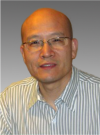 Nankai University, China
Nankai University, China
zgchen@nankai.edu.cn
http://topo-photonics.nankai.edu.cn/yjtd.htm
Dr. Zhigang Chen is currently a Chair Professor at Nankai University, China. He earned his Ph.D. from Bryn Mawr College and was promoted to the rank of Senior Research Staff Member at Princeton University before joining the faculty at San Francisco State University in 1998. His research activities are centered around topological photonics, nonlinear optics, beam shaping and optical manipulation. He has edited one book and published several invited book chapters along with about 300 papers in leading scholar journals. Currently, Dr. Chen is an Editorial Board Member of Light: Science & Application, an Editor of Advances in Physics: X and an Associate Editor of Frontiers in Photonics, and he has previously served as a Topical Editor for Optics Letters and an Associate Editor for Science Bulletin and Scientific Reports. He has served on the committees for several international conferences, including the General Chair for CLEO-Fundamental Science. Dr. Chen was elected to the Fellow of the Optical Society of America (now Optica) in 2009 and the Fellow of the American Physical Society in 2015.
Kin Seng Chiang
 Chair Professor of Electronic Engineering
Chair Professor of Electronic Engineering
Department of Electronic Engineering
City University of Hong Kong, Hong Kong
Web: http://www.ee.cityu.edu.hk/~kschiang/
Prof. Chiang received the B.E. (Hon.I) and Ph.D. degrees in electrical engineering from the University of New South Wales, Australia, in 1982 and 1986, respectively.
In 1986, he spent six months with the Department of Mathematics, Australian Defense Force Academy, Canberra, Australia. From 1986 to 1993, he was with the Division of Applied Physics, Commonwealth Scientific and Industrial Research Organization (CSIRO), Sydney, Australia. From 1992 to 1993, he worked concurrently for the Optical Fibre Technology Centre, University of Sydney. In August 1993, he joined the Department of Electronic Engineering of City University of Hong Kong, where he is a Chair Professor. From 2007 to 2010, he was concurrently a Chang Jiang Chair Professor of the University of Electronic Science and Technology of China. He has published over 400 papers on optical fiber/waveguide theory and modeling, fiber/waveguide characterization, fiber/waveguide devices, optical fiber sensors, and nonlinear guided-wave optics.
Prof. Chiang is a Fellow of the Optical Society of America (OSA) and a member of the International Society for Optical Engineering (SPIE) and the Australian Optical Society. From 1987 to 1988, he received a Japanese Government research award and spent six months at the Electrotechnical Laboratory, Tsukuba City, Japan. In 2000, he received a Croucher Award from the Croucher Foundation. He is an Associate Editor of several international journals, including IEEE/OSA Journal of Lightwave Technology, International Journal of Optics, Photonic Sensors, and Light: Science & Applications, and a member of the Advisory Board of Optics Communications.
Research interest/expertise:
Modern optical fiber and waveguide technology, including optical fiber and waveguide theory, passive and active optical devices, optical sensors, characterization of optical fibers and waveguides, nonlinear guided-wave optics, and optical communications.
Myong Yong Choi
 Director of Core-Facility Center for Photochemistry and Nanomaterials
Director of Core-Facility Center for Photochemistry and Nanomaterials
Department of Chemistry
Gyeongsang National University
Jinju, South Korea
Email: mychoi@gnu.ac.kr
Personal Website: https://mychoislab.gnu.ac.kr
Professor Myong Yong Choi is a physical chemist specializing in spectroscopy, laser photochemistry, and nanomaterials. He is a senior academic staff member in the Department of Chemistry at Gyeongsang National University (GNU), South Korea, and the director of the Core-Facility Center for Photochemistry and Nanomaterials. Additionally, he serves as the director of the Graduate School for Molecular Material Chemistry at GNU.
Prof. Choi received his M.S. and Ph.D. in Chemistry from the University of Idaho and the University of North Carolina at Chapel Hill, respectively. He worked as a postdoctoral fellow in the Faculty of Science at the University of Southern California.
His research team has developed numerous novel techniques based on laser processes to characterize and produce various metal nanoparticles, alloys, composites, and coordination polymers. They have made significant contributions to spectroscopy, sensors, and catalysis. Recent research also involves the laser synthesis of functional nano- and biomaterials for use in energy production and environmental remediation.
Prof. Choi has published over 190 refereed papers in high-impact international journals, five book chapters, and eleven patents. He has also delivered several invited/keynote/plenary lectures at international conferences and academic institutions.
Prof. Choi has served on several Gyeongsang National University management committees, including the Center for Laboratory Safety, the Center for Research Facilities, and as department chairperson. He has also served on scientific advisory boards for external scientific organizations.
He has received several prizes, awards, and fellowships, including the Member of Gaechuck Hanlim Academy, the Gaechuck Award for Excellence in Teaching, the KCS Kim Myung Soo Award, the KCS Young Physical Chemist Award, and the Top 50 Environmental Technology Award by the Ministry of Environment.
Daping Chu
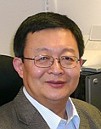 University of Cambridge, UK
University of Cambridge, UK
E-mail: dpc31@cam.ac.uk
Web: https://www.cpds.eng.cam.ac.uk/
Professor Daping Chu holds the Chair of Technology and Innovation at University of Cambridge, where he is also the Director of Centre for Advanced Photonics and Electronics (CAPE) and the Director of the Centre for Photonic Devices and Sensors (CPDS). He is a Fellow of IoP and IET. His current research interests are in the areas of spatial light modulators including phase-only LCOS devices and OASLMs, 3D holography, AR/VR HMDs and HUDs, multi-stable reflective displays, and the demonstration of first OAM multi-view colour display, accommodation-free colour HMD, and 2D beam steering and stacked WSSs for optical fibre communications.
Juergen Czarske
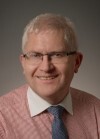 TU Dresden, Germany
TU Dresden, Germany
E-mail: juergen.czarske@tu-dresden.de
Prof Juergen Czarske (Fellow EOS, OPTICA, SPIE, IET, IoP) is full chair professor of TU Dresden, Germany. He is director of Competence Center Biomedical Computational Laser Systems (BIOLAS) and advisor of SPIE-OPTICA-Student Chapter Dresden. Prof Czarske is an international prize-winning inventor of laser-based technologies. His awards include the 2008 Berthold Leibinger Innovation Prize of Trumpf Laser Systems, 2019 OPTICA Joseph-Fraunhofer-Award/Robert-M.-Burley-Prize (Washington D.C.), 2020 Laser Instrumentation Award of IEEE Photonics Society, 2022 SPIE Chandra S Vikram Award (San Diego) and 2023 Qinghe Seminar Talk of Chinese Academy of Science (Shanghai). Prof Czarske has conducted more than 1000 talks and papers, including more than 250 papers in peer-reviewed journals, over 150 invited talks and over 30 patents. He has generated more than 5 Professors and supervised more than 200 Ph.D., Master, and Bachelor theses. The lecturing included over 25 courses and over 15 000 examinations, in total. Prof Czarske is fostering talented students intensively. Students and members of his chair were awarded with over 100 prizes and honors. He is Vice President of International Commission for Optics, ICO, and was the general chair of the world congress ICO-25-OWLS-16-Dresden-Germany-2022, with participants from 55 countries of 5A (Africa, America, Asia, Australia, and Amazing Europe) and plenary talks of 3 Nobel laureates. Prof Czarske established new interdisciplinary approaches for agile computational imaging including modern approaches such as deep neural networks and dynamic holography. Major achievements are the transfer of real-time approaches to organoids and optogenetics to elucidate diseases. He pursues research in an interdisciplinary way including approaches such as lensless multicore fiber endoscopy for 3D imaging, optical diffractive tomography of cancer cells, Brillouin elastography, and deep learning-based classification of cancer. Prof Czarske reinvented his research and changed the direction of transfer to applications often. One recent topic is the controlling of light in multimode fibers towards physical layer security for fiber communication technique.
Keshav M. Dani
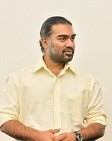 Femtosecond Spectroscopy Unit
Femtosecond Spectroscopy Unit
Okinawa Inst. of Sci. & Tech. Grad. Univ., Japan
E-mail: KMDani@oist.jp
Web: https://groups.oist.jp/fsu
Keshav Dani leads the Femtosecond Spectroscopy Unit (FSU) at the Okinawa Institute of Science and Technology (OIST) in Japan, where he is currently an Associate Professor. He joined OIST in 2011 as an Assistant Professor after completing a Director’s Postdoctoral Fellowship at the Center for Integrated Nanotechnologies at Los Alamos National Laboratory (2007-2011) in optical metamaterials. He graduated from UC Berkeley in 2006 with a PhD in Physics under the supervision of Prof. Daniel Chemla exploring the nonlinear optical response of the quantum Hall system. Prior to that he obtained a BS from Caltech in Mathematics with a senior thesis in Quantum Information Theory under John Preskill and Hideo Mabuchi.
At OIST, Prof. Dani has developed novel techniques in time-resolved photoemission spectroscopies applied to semiconductor materials. In particular, using time-resolved photoemission electron microscopy (TR-PEEM), he imaged charge transport and defect trapping mechanisms on the nanometer-, femtosecond-scale in two-dimensional semiconductor heterostructures and perovskite photovoltaic materials. Recently, he has also pioneered time-, angle- and spatially-resolved photoemission spectroscopy (TR-µ-ARPES) to visualize dark excitons and excitonic wavefunctions in microscopic samples of monolayer transition metal dichalcogenides.
Fei Ding
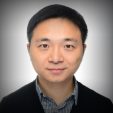 Director of Institute for Solid State Physics
Director of Institute for Solid State Physics
Chair Professor of Nanophysics
Leibniz University Hannover, Germany
Web: https://www.fkp.uni-hannover.de/en/research-groups/group-ding
Prof. Ding received the BSc degree in 2003 from Hefei University of Technology. In 2004 he was selected in the first joint doctoral promotion program between Max Planck Society Germany and Chinese Academy of Sciences, and then obtained the PhD degree in 2009. From 2010 to 2012 he was a Marie Curie postdoctoral fellow in IBM Zurich Research Laboratory. Since 2012 he became a group leader in IFW Dresden and then the deputy head of institute. In 2016 he was promoted to full professor (W3 Chair in Nanophysics) at Leibniz University Hannover. He received an ERC Starting Grant (2017-2022) and an ERC Consolidator Grant (2023-2027), both for his vision of using semiconductor quantum dots in building real-world quantum networks.
Pietro Ferraro
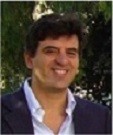 CNR-ISASI
CNR-ISASI
Institute of Applied Sciences & Intelligent Systems
E-mail: pietro.ferraro@cnr.it
Pietro Ferraro is currently director of research at CNR Institute of Applied Sciences and Intelligent Systems (ISASI), Napoli Italy. Previously, he has been from 2014 to 2019 Director of ISASI and President of CNR Research Area in Pozzuoli from 2012 to 2019. Currently he has various roles in different public and private organizations in Italy.
He also worked as Principal Investigator with Alenia Aeronautics. He has published 12 book chapters, 300 papers in journals, more than 300 papers at International Conferences. He edited two books with Springer. He holds 14 patents. Among his current scientific interests are: holography, interferometry, microscopy, fabrication of micro-nanostructures, ferroelectric crystals, optical fiber sensors, fiber bragg gratings, nano-microfluidics, optofluidics, EHD Ink jet printing, soft matter.
Dr. Ferraro has chaired many International Conferences. He is in the Editorial Board of Optics and Lasers in Engineering (Elsevier) and Topic Editor of Biomedical Optics Express (OSA).
He is Fellow of SPIE and Fellow of OSA. He is Senior Member of IEEE and Member of IEEE Photonics Italian Chapter.
According to Google Scholar he has about 12.000 citations and H-index of 57.
He has published his research in many high-ranked journals among which are: Nature-Light & Science Applications, Nature Nanotechnology, Science, PNAS, Advanced Materials, Advanced Functional Materials, Proceedings of IEEE, ACS Materials and Interfaces, Lab On a Chip, Nature Communications.
Andrew Forbes
 University of the Witwatersrand
University of the Witwatersrand
E-mail: Andrew.Forbes@wits.ac.za
Prof. Andrew Forbes received his PhD in 1998 in lasers/optics from the University of Natal (South Africa) and then spent several years working in a technology start-up, much of the time as Technical Director. In 2015 he joined the University of the Witwatersrand on the Distinguished Professor programme where he started a new laboratory that focuses on Structured Light and its applications.
Prof. Forbes is active in promoting photonics in Africa, a founding member of the Photonics Initiative of South Africa and Director of South Africa’s Quantum Roadmap. He is a Fellow of SPIE, Optica, the South African Institute of Physics (SAIP), and an elected member of the Academy of Science of South Africa. He holds an A-rating by the South African NRF, 4 honorary professorships at Stellenbosch University (South Africa), Huazhong University of Science and Technology (China), Chiba University (Japan) and Zhejiang University (China). Prof. Forbes has edited and/or contributed to several books, proceedings and patents, published >300 scientific journal papers, and is an active populariser of science through numerous popular articles, television shows and radio contributions. In 2015 Andrew won the national NSTF Photonics award for his contribution to the field over the past decade, in 2018 he was awarded an “A rating” (top rating possible) from the South African National Research Foundation, and in 2020 won the Alexander von Humboldt Georg Forster Prize and Fellowship for outstanding contributions to photonics. He is the 2020 winner of the South African Institute of Physics Gold Medal, the highest award in physics in South Africa, making him the youngest winner to date. In 2021 he won the Vice-Chancellor’s Award for Research, the highest award at his university, and in 2022 the Sang Soo Lee award from the Korean Optical Society and OPTICA (formerly the Optical Society of America) for leadership in photonics research. He has been announced as the 2024 winner of the Physics prize by TWAS for outstanding contributions to structured light.
His research interests include structured & singular light beams, digital holography, classical entanglement, quantum optics, lasers and laser resonators.
Wolfgang Freude
 Wolfgang Freude received the Dipl.-Ing. (M.S.E.E.) and the Dr.-Ing. (Ph.D.E.E.) degrees in Electrical Engineering in 1969 and 1975 from the University of Karls-ruhe. He is Professor at the Institute of Photonics and Quantum Electronics, a Member of the Network of Excellent Retired Scientists, and a Distinguished Senior Fellow at Karlsruhe Institute of Technology (KIT). His research activities are in the area of optical and wireless high-data rate transmission, high-density integrat-ed-optics with a focus on silicon photonics, photonic crystals and semiconductor optical amplifiers, and in the field of low-energy opto-electronic devices and pro-tocols for optical access networks.
Wolfgang Freude received the Dipl.-Ing. (M.S.E.E.) and the Dr.-Ing. (Ph.D.E.E.) degrees in Electrical Engineering in 1969 and 1975 from the University of Karls-ruhe. He is Professor at the Institute of Photonics and Quantum Electronics, a Member of the Network of Excellent Retired Scientists, and a Distinguished Senior Fellow at Karlsruhe Institute of Technology (KIT). His research activities are in the area of optical and wireless high-data rate transmission, high-density integrat-ed-optics with a focus on silicon photonics, photonic crystals and semiconductor optical amplifiers, and in the field of low-energy opto-electronic devices and pro-tocols for optical access networks.
He has authored and co-authored more than 280 papers, co-authored a book enti-tled "Optical Communications" (Berlin, Springer-Verlag 1991-2005, in German), and authored or co-authored the following five book chapters: "Multimode Fibres" (Handbook of Optical Communications, Berlin, Springer-Verlag 2002, in German), "Microwave Modelling of Photonic Crystals" (Photonic Crystals - Advances in Design, Fabrication, and Characterization, Berlin, Wiley-VCH 2004), "Linear Semiconductor Optical Amplifiers" (Fibre Optic Communication - Key Devices, Berlin, Springer-Verlag 2012), "Last-Mile Technologies: New WDM Access Proposals, Devices and Experiments" (Lasers and Electro-Optics Research and Technology, Nova Science Publishers 2013), and "Optical OFDM and Nyquist Multiplexing" (Optical Fiber Telecommunications VI B. Systems and Networks, Amsterdam, Elsevier 2013).
Prof. Freude is an Honorary Doctor of the Kharkov National University of Radioelectronics, Kharkov, Ukraine, and a member of VDE/ITG, IEEE, and OSA. Among others, he serves in the Technical Pro-gramme Committee "Photonic Networks and Devices" (OSA Advanced Photonics Congress, since 2013), and was Member and Chair of the Subcommittee "Micro- and Nano-Photonic Devices" for CLEO 2011-2013. Until 2010 he was Vice Chair of the IEEE Germany Photonics Society Chapter.
Andrea Galtarossa

Full professor Electromagnetic Waves
Department of Information Engineering
University of Padova, Italy
E-mail: andrea.galtarossa@unipd.it
Andrea Galtarossa is full professor of Electro-Magnetic waves and Photonics in the Department of Information Engineering, University of Padova, Italy.
His research activity is on propagation effects in optical devices, in particular single-mode optical fibers: distributed measurements of birefringence in optical fibers, design of ultra-low PMD fibers, distributed measurements in few-mode fibers, polarization effects in telecommunication fibers and special fibers and distributed optical fiber sensors.
He is co-author of more than 200 peer-reviewed journal/conference papers within the above-mentioned topics, one book as co-editor and inventor in seven patents.
He has served on several international conference committees, including ECOC and OFC. He served Optics Letters as Topical Editor from 2009-2013 and Deputy Editor from 2014-2020.
Andrea Galtarossa is member of Accademia Galileiana Scienze, Lettere ed Arti, Fellow of OPTICA (since 2016) and Fellow of IEEE (2018).
Malte C. Gather
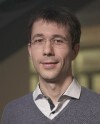 University of St Andrews, UK
University of St Andrews, UK
E-mail: mcg6@st-andrews.ac.uk
Malte C. Gather studied physics and material sciences at RWTH Aachen University, Germany and Imperial College London, UK. In 2008, he received his PhD from University of Cologne, Germany and then was a postdoc at University of Iceland and later a Bullock-Wellman Fellow at Harvard University. Malte Gather was assistant professor at TU Dresden, Germany, from 2011 to 2013 before getting a full professorship at the University of St Andrews, UK. In 2019, he was awarded an Alexander von Humboldt Professorship, Germany’s most highly endowed research award, and became the founding director of the Humboldt Centre for Nano- and Biophotonics at the University of Cologne. He also held a visiting professorship at Harvard Medial School.
Gather made several seminal contributions to the fields of organic optoelectronics, polaritonics, and biophotonics. He invented a technique that turns living cells into tiny lasers – a discovery that was recognized as one of the top 10 breakthroughs in physics by the Institute of Physics, and that is listed in the Guinness Book of World Records. His group is an international leader in the quickly growing field of bio-integrated nanolasers, where they recently demonstrated how inserting tiny lasers into heart muscle tissue allows recording cell contraction dynamics with unprecedented resolution and can increase tagging-capacity by orders of magnitude. The team also established a self-referenced optical interference microscopy technique that continuously maps miniscule mechanical forces applied by live cells. In addition, the team were the first to successfully use OLEDs for optogenetic control of brain cells and to develop efficient polaritonic OLEDs. These translational breakthroughs are underpinned by fundamental studies of micro-cavity optics, strong light-matter coupling, and organic electronics.
Gather received an ERC Starting Grant, two ERC Proof of Concept Grants, and an ERC Advanced grant. He is also a recipient of the Institute of Physics Paterson Medal and Prize, Rudolf-Kaiser-Prize in Experimental Physics, and the Daimler und Benz Stiftung Fellowship. He has organized or co-organized many international conferences, most recently as the general chair of the International Conference on Electroluminescence and Optoelectronic Devices (ICEL) and the Gordon Research Conference on Lasers in Micro, Nano and Bio Systems. He is an associated or guest editor at Organic Electronics, Frontiers in Photonics Biophotonics, Advanced Optical Materials, and Light Science and Applications.
Francisco J. Garcia-Vidal
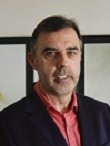
The Autonomous University of Madrid (UAM), Spain
Email: fj.garcia@uam.es
Francisco J. Garcia-Vidal is a scientific group leader and full professor at the Physics department of the Autonomous University of Madrid (UAM) in Spain. Garcia-Vidal received his master's degree in Physics (1988) and his Ph.D. degree in Physics (1992) from UAM. From 1994 to 1996 he was a post-doctoral staff researcher at the Imperial College of London, where he began to work in the field of Nanophotonics. Since 1997 he has been associated with UAM, first as an associate professor and since December 2007 as a full professor. He has been also invited as visiting professor by the University of Strasbourg in France (twice), the Imperial College of London in UK and the University of California at Berkeley in US. Prof. Garcia-Vidal is the founding director of the Condensed Matter Physics Center (IFIMAC) at UAM. He was also the recipient of an ERC Advanced Grant (2012-2017) devoted to analysing quantum effects in Plasmonics and is also a Fellow of the Optical Society of America. From January 2018 to December 2021, he served as a Divisional Associate Editor of Physical Review Letters.
Prof. Garcia-Vidal and his group have worked in different areas within Plasmonics and Metamaterials such as: Surface Enhanced Raman Scattering, theoretical explanation of the phenomenon of extraordinary transmission of light through subwavelength apertures, development of the concept of spoof surface plasmons and, more recently, Quantum Plasmonics and two-dimensional materials. He has authored more than 300 refereed journal articles). Prof. Garcia-Vidal has been included six times (2013, 2014, 2017, 2019, 2020 and 2021) in the list of Highly Cited Researchers in the field of Physics.
Marc P. Georges
 Université de Liège, STAR Institute - Centre Spatial de Liège, Belgium
Université de Liège, STAR Institute - Centre Spatial de Liège, Belgium
Marc P. Georges was graduated in physics at the Université catholique de Louvain (Belgium) in 1989. He received a joint master diploma in Instrumentation and Measurement from the same university and Imperial College of London in 1990. Then he joined the Centre Spatial de Liege (CSL, a Centre of Excellence in Optics of the European Space Agency) at the Liege University (Belgium), where he worked on several projects related to development of holographic metrology methods and devices for aerospace structures. He received his PhD in 1998 from the same university. Since 2006 he is responsible of the laser and nondestructive testing laboratory of the CSL. He leads researches and developments in optical metrology by various coherent and uncoherent imaging methods for assessing the behavior of space structures under space simulated environments. Also he develops innovative nondestructive testing methods of aerospace composites (visible and thermal infrared holography, thermography, laser ultrasonics, Terahertz wave imaging and holography). He is SPIE and OSA Senior member. He is author and co-author of scientific papers, invited journal papers and conferences, keynote speeches and book chapters. He is Chair of the Unconventional Optical Imaging SPIE conference (Strasbourg 2018, 2020), program chair of the Digital Holography and 3D Imaging OSA conference (Bordeaux 2019), Symposium chair of the SPIE Optical Metrology and in the Steering Committee of World of Photonics Congress (Munich). He also serves as Topical Editor of Applied Optics journal and is guest editor of various SPIE and OSA journals devoted to holography and coherent imaging.
Harald Giessen
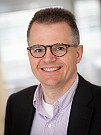 Harald Giessen graduated from Kaiserslautern University with a diploma in Physics and obtained his M.S. and Ph.D. in Optical Sciences from the University of Arizona in 1995. After a postdoc at the Max-Planck-Institute for Solid State Research in Stuttgart he moved to Marburg as assistant professor. From 2001-2004, he was associate professor at the University of Bonn. Since 2005, he is full professor and holds the Chair for Ultrafast Nanooptics in the Department of Physics at the University of Stuttgart. He is also co-chair of the Stuttgart Center of Photonics Engineering, SCoPE. He was guest researcher at the University of Cambridge, and guest professor at the University of Innsbruck and the University of Sydney, at A*Star, Singapore, as well as at Beijing University of Technology. He is associated researcher at the Center for Disruptive Photonic Technologies at Nanyang Technical University, Singapore. He received an ERC Advanced Grant in 2012 for his work on complex nanoplasmonics. He is on the advisory board of the journals "Advanced Optical Materials", "Nanophotonics: The Journal", and "ACS Photonics". He is a topical editor for ultrafast nanooptics, plasmonics, and ultrafast lasers and pulse generation of the journal "Light: Science and Applications" of Springer Nature. He is a Fellow of the Optical Society of America.
Harald Giessen graduated from Kaiserslautern University with a diploma in Physics and obtained his M.S. and Ph.D. in Optical Sciences from the University of Arizona in 1995. After a postdoc at the Max-Planck-Institute for Solid State Research in Stuttgart he moved to Marburg as assistant professor. From 2001-2004, he was associate professor at the University of Bonn. Since 2005, he is full professor and holds the Chair for Ultrafast Nanooptics in the Department of Physics at the University of Stuttgart. He is also co-chair of the Stuttgart Center of Photonics Engineering, SCoPE. He was guest researcher at the University of Cambridge, and guest professor at the University of Innsbruck and the University of Sydney, at A*Star, Singapore, as well as at Beijing University of Technology. He is associated researcher at the Center for Disruptive Photonic Technologies at Nanyang Technical University, Singapore. He received an ERC Advanced Grant in 2012 for his work on complex nanoplasmonics. He is on the advisory board of the journals "Advanced Optical Materials", "Nanophotonics: The Journal", and "ACS Photonics". He is a topical editor for ultrafast nanooptics, plasmonics, and ultrafast lasers and pulse generation of the journal "Light: Science and Applications" of Springer Nature. He is a Fellow of the Optical Society of America.
Anderson S L Gomes
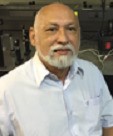
University Federal of Pernambuco
Full CV could be found at: http://lattes.cnpq.br/8841334894205599
Personal
- Born December 2, 1956, in Recife, Pernambuco, Brazil.
- Married, two sons.
Education
- Undergraduate degree in Physics from Department of Physics, University Federal of Pernambuco (1978)
- Master degree in Physics from Department of Physics, University Federal of Pernambuco (1982)
- PhD degree in Laser Physics from Imperial College of Science, Technology and Medicine, University of London (1986),
- Post-doctoral fellowship at Brown University (1992/93).
Present Professional Position
- Full Professor of Physics at the Physics Department, University Federal of Pernambuco.
- Member of the Graduate Program in Physics and Graduate Program in Dentistry, University Federal of Pernambuco.
- Coordinator of the National Institute of Science and Technology of Photonics – 2016/2020.
Scientific and Academic Activities and Awards
- His present scientific activities are in the areas of Laser applications in nanophotonics, biophotonics and nonlinear photonics.
- Co-author of over 260 scientific papers and 02 international patents.
- H Index (WoS): 30
- Supervised more than 40 Master and PhD thesis.
- Holds a fellowship 1A at CNPq (top ranking of the National Research Foundation in Brazil).
- Fellow of the Optical Society of America.
- Member of SPIE, IEEE, SBPC (Brazilian Society for the Progress of Science) and SBF (Brazilian Physics Society).
- Member of the National Order of the Scientific Merit, Classe Comendador in the area of Physical Sciences, by Presidential Decree of 27th December 2010.
- Member of the Brazilian Academy of Sciences.
National and International Scientific Contribution
- Chair of the International Council of Optical Society of America (2011-2012).
- Co-Chair of International Conference of Frontiers in Polymers and Advanced Materials, Recife, Brazil, 2001.
- Co-chair of the Brazilian MRS Meeting, Recife, Brazil, 2005.
- Chair of the 1st Latin America Optics and Photonics Conference, OSA, Recife, Brazil, 2010.
- Co-Chair of the National Meeting of Condensed Matter Phuysics, Brazil, 2007.
- Co-Chair of the 10th International Nanophotonics Conference, Recife, Brazil, 2017.
- Member of scientific policy committees at Brazilian Agencies CNPq and CAPES
- National Coordinator of the area of Physics and Astronomy at CAPES (Brazilian Education Agency, 2008-2010),
- Associate Editor of Advances in Optics and Photonics, 2014-2016 (OSA).
- Member of the Council of the Brazilian Physics Society (SBF) (2019-2021)
- Member of the Council of the Brazilian Society for Achievement of Science (SBPC) – 2019-2023
Governmental Public Positions (by appointment of the State Governor)
- State Secretary of Science, Technology and Environment of Pernambuco (2010).
- State Secretary of Education of Pernambuco, January (2011 and 2012).
Institutional International Collaborative Projects
- Project on Nonlinear Optics with Metallic Nanoshells – UFPE/University Claude Bernard Lyon, France, sponsored by CAPES-COFECUB Program (2015/2018)
- Project on Biomedical Applications of Nanomaterials – UFPE/University of Shenzhen, China, sponsored by Brazil-China Cooperation in Nanotechnology, MCTI - Ministry Of Science, Technology And Innovation, Brazil (2016/2018)
- Project on random Fiber Lasers and Applications, with UESTC, China (since 2018)
Min Gu
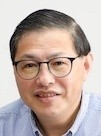 University of Shanghai for Science and Technology, China
University of Shanghai for Science and Technology, China
E-mail: gumin@usst.edu.cn
Professor Min Gu is Executive Chancellor and Distinguished Professor of University of Shanghai for Science and Technology. He was Distinguished Professor and Associate Deputy Vice-Chancellor at RMIT University and a Laureate Fellow of the Australian Research Council. He is an author of four standard reference books and has over 500 publications in nano/biophotonics. He is an elected Fellow of the Australian Academy of Science and the Australian Academy of Technological Sciences and Engineering as well as Foreign Fellow of the Chinese Academy of Engineering. He is also an elected fellow of the AIP, the OSA, the SPIE, the InstP, and the IEEE. He was President of the International Society of Optics within Life Sciences, Vice President of the Board of the International Commission for Optics (ICO) (Chair of the ICO Prize Committee) and a Director of the Board of the Optical Society of America (Chair of the International Council). He was awarded the Einstein Professorship, the W. H. (Beattie) Steel Medal, the Ian Wark Medal, the Boas Medal and the Victoria Prize for Science and Innovation. Professor Gu is a winner of the 2019 Dennis Gabor Award of SPIE.
Minghui Hong
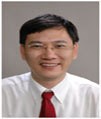 Department of Electrical and Computer Engineering
Department of Electrical and Computer Engineering
National University of Singapore (NUS)
E-mail: elehmh@nus.edu.sg
Web: www.ece.nus.edu.sg/laserlab
Prof. Minghui Hong, received his B.S. & M.S. from Xiamen Univ., China and M.Eng. & PhD from NUS. His research interest includes Optical Engineering, Laser Micro-processing and Nano-engineering. He has co-authored 10 book chapters, 24 patents granted, and 350+ scientific papers and 50+ plenary/keynote/invited talks in international conferences. He is a member of organizing committees for Laser Precision Micromachining International Conference (2001~2017), International Symposium of Functional Materials (2005, 2007 and 2014), Chair of International Workshop of Plasmonics and Applications in Nanotechnologies (2006), Chair of Conference on Laser Ablation (2009) and Chair of Asia-Pacific Near-field Optics Conference (2013). Prof. Hong is also invited to serve as an Editorial Board Member of Scientific Reports, Associate Editor of Science China, Editor of Laser Micro/nanoengineering, Guest Editor of Applied Physics A and Industrial Laser Users. Prof. Hong is Fellow of Optical Society of America (OSA), Fellow of International Society for Optics and Photonics (SPIE), and Fellow of International Academy of Photonics and Laser Engineering (IAPLE).
Xiaojun Jia
 Shanxi University, China
Shanxi University, China
Email: jiaxj@sxu.edu.cn
Dr. Xiaojun Jia, Professor at Shanxi University. He received the B.S. and Ph.D. degrees in physics from Shanxi University in 2000 and 2005, respectively. After postdoctoral researches at Université Pierre et Marie Curie, he joined the faculty of Shanxi University. His research interests focus on the quantum communication and quantum precision measurement. He has authored or co-authored more than 150 papers with over 2000 citations, and he delivered over 50 invited talks/seminars in international/national conferences.
Xiangqian Jane Jiang
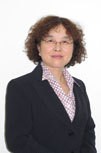 EPSRC Centre in Advanced Metrology,
EPSRC Centre in Advanced Metrology,
University of Huddersfield, UK
E-mail: x.jiang@hud.ac.uk
Professor Jane Jiang holds a UK Royal Academy of Engineering/Renishaw Chair in Precision Metrology. Jane is the Director of the EPSRC National Centre for Innovative Manufacturing in Advanced Metrology. She obtained her PhD in measurement science in 1995, a Professorial Chair in 2003, a DSc for precision metrology in 2007.
Jane's research includes: development of mathematical models and algorithms for surface metrology and optical metrology, including numerical analysis, filtration, parametric characterization and standardization. She works on new generation optical techniques for autonomous measurement, including optical interferometry, spectral interferometry and optical chip interferometry as well as deflectometry technologies.
Jane has published more than 330 papers; author/co-authored/edited 16 books, journal special issues and conference proceedings on measurement science and instrumentation. Jane is a Fellow of the Royal Academy of Engineering (FReng), a Fellow of Collège International pour la Recherche en Productique (FCIRP) and the Institute of Engineering Technology (FIET). She was awarded a Royal Society Wolfson Research Merit Award in 2006 and the Sir Harold Hartley Medal in 2014.
Diaa Khalil
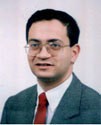 Diaa Khalil obtained his Ph.D. degree in Optoelectronics, from the INPG (Institut National Polytechnique de Grenoble) France in 1993. From 1993, he joined the Electronics and Communication Eng. ECE Dept. in the Faculty of Eng., Ain Shams University FE_ASU as a permenant staff. From Jan. 1998 to May 2000, he joined the LCIS (Laboratoire de Conception et d'Integration des Systèmes), at the INPG, as an invited Professor. From 2000 to 2004 he joined MEMSCAP as a head of the Optical MEMS group in MEMSCAP Egypt. Since 2004, he is a Professor in the ECE Dept., in the FE_ASU, and since November 2015, he is the chairman of this Dept.
Diaa Khalil obtained his Ph.D. degree in Optoelectronics, from the INPG (Institut National Polytechnique de Grenoble) France in 1993. From 1993, he joined the Electronics and Communication Eng. ECE Dept. in the Faculty of Eng., Ain Shams University FE_ASU as a permenant staff. From Jan. 1998 to May 2000, he joined the LCIS (Laboratoire de Conception et d'Integration des Systèmes), at the INPG, as an invited Professor. From 2000 to 2004 he joined MEMSCAP as a head of the Optical MEMS group in MEMSCAP Egypt. Since 2004, he is a Professor in the ECE Dept., in the FE_ASU, and since November 2015, he is the chairman of this Dept.
He worked as a consultant for many international companies in integrated Optics and Optical MEMS. From 2004 to 2007 he worked as a Technical Consultant for Mentor Graphics Egypt, responsible for building a team working in the Design to Silicon D2S Engineering with emphasis on the optical and technology modelling of the photolithography process including the Resolution Enhancement Techniques RET and Optical Proximity Corrections OPC. From 2007 he joined Si-ware Systems as a CTO of the MEMS division where he is currently leading a team for the development of the smallest MEMS FTIR spectrometer, a product that has been launched in the market and got the Prism Award in the Photonics West conference in 2014.
Prof. Diaa Khalil is a member in the SPIE, and a senior member in the OSA and IEEE. He is a holder of Egyptian state prize in engineering sciences in 1998, and Selected as one of the pioneers in the field of engineering by the Marquise Who's Who in Science and Engineering, in its 10th Anniversary Edition in 2007. He is a member in the National Radio Science Committee NRSC and the ITU (International Telecommunication Union) committee, in the Academy of Scientific Research and Technology ASRT in Egypt and the head of commission D in the national URSI committee. From 2004 to 2008, he was the Editorial Manager of the Scientific Bulletin of the Faculty of Engineering, Ain Shams University.
Prof. Diaa Khalil is an inventor of about 13 granted patents and more than 10 other patent applications. He is author and co-author of more than 230 publications in international journals and conferences.
Lin Li
 Professor Lin Li is a Professor of Laser Engineering and Director of Laser Processing Research Centre at The University of Manchester. He has served as the President of Laser Institute of America (LIA, 2016), President of International Academy of Photonics and Laser Engineering (IAPLE, 2013-2015), and President of Association of Laser Users (AILU – 2017-2019). He is an elected Fellow of Royal Academy of Engineering, Laser Institute of America, International Academy of Production Engineering and Institute of Engineering and Technology. He received Arthur Charles Main Award from the Institute of Mechanical Engineers in 2001 for work in laser based nuclear decommissioning technology. He received the Sir Frank Whittle Medal from the Royal Academy of Engineering in 2013 for his outstanding and sustained achievements in engineering innovations in manufacturing that has led to worldwide commercial applications. In 2014 he received Wolfson Research Merit Award from the Royal Society for his research on laser nano-fabrication and nano-imaging, and received the Distinguished Achievement Medal as the Researcher of the Year, The University of Manchester in 2014. He received BSc degree in electrical engineering from Dalian University of Technology in 1982 and a PhD degree from Imperial College London in 1989 in Laser Engineering. During 1988-1994 he worked at Liverpool University (UK) as a postdoctoral fellow and since 1994 he has been academic staff at UMIST (University of Manchester Institute of Science and Technology). In 2000 he was promoted to a full professor.
Professor Lin Li is a Professor of Laser Engineering and Director of Laser Processing Research Centre at The University of Manchester. He has served as the President of Laser Institute of America (LIA, 2016), President of International Academy of Photonics and Laser Engineering (IAPLE, 2013-2015), and President of Association of Laser Users (AILU – 2017-2019). He is an elected Fellow of Royal Academy of Engineering, Laser Institute of America, International Academy of Production Engineering and Institute of Engineering and Technology. He received Arthur Charles Main Award from the Institute of Mechanical Engineers in 2001 for work in laser based nuclear decommissioning technology. He received the Sir Frank Whittle Medal from the Royal Academy of Engineering in 2013 for his outstanding and sustained achievements in engineering innovations in manufacturing that has led to worldwide commercial applications. In 2014 he received Wolfson Research Merit Award from the Royal Society for his research on laser nano-fabrication and nano-imaging, and received the Distinguished Achievement Medal as the Researcher of the Year, The University of Manchester in 2014. He received BSc degree in electrical engineering from Dalian University of Technology in 1982 and a PhD degree from Imperial College London in 1989 in Laser Engineering. During 1988-1994 he worked at Liverpool University (UK) as a postdoctoral fellow and since 1994 he has been academic staff at UMIST (University of Manchester Institute of Science and Technology). In 2000 he was promoted to a full professor.
Quan Li
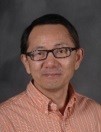 Institute of Advanced Materials, Southeast University, China
Institute of Advanced Materials, Southeast University, China
E-mail: quanli3273@gmail.com
Quan Li is Distinguished Chair Professor and Director of Institute of Advanced Materials at Southeast University. He held appointments in USA, Germany, and France. Li received his Ph.D. in Organic Chemistry from the Chinese Academy of Sciences (CAS), where he was promoted to a youngest Full Professor of Organic Chemistry and Medicinal Chemistry in February 1998. He is a Fellow of the Royal Society of Chemistry (FRSC). He has been elected as a member of the European Academy of Sciences and a member of European Academy of Sciences and Arts. He has also been honored as Professor and Chair Professor at several universities. In the past ten years, he has edited eight books (2 Wiley-VCH, 2 Wiley, and 4 Springer books), and has co-authored 40 chapters including the invited author of the entry entitled “Liquid Crystals” in the prestigious Kirk-Othmer Encyclopedia. He has been listed among the world’s top 2% scientists by Stanford University. Li’s current research interest spans from stimuli-responsive smart soft matter, advanced photonics, and optoelectronic materials for energy harvesting and energy saving to functional biocompatible materials and nanoparticles to nanoengineering and device fabrication.
Xingde Li
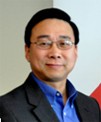 Department of Biomedical Engineering, Johns Hopkins University, Baltimore, Maryland 21205, USA
Department of Biomedical Engineering, Johns Hopkins University, Baltimore, Maryland 21205, USA
E-mail: xingde@jhu.edu
Web: www.bme.jhu.edu/people/primary.php?id=915
Group Website: http://bit.bme.jhu.edu
Dr Xingde Li received his PhD degree in Physics and Astronomy from the University of Pennsylvania in 1998, and is now a full professor of Biomedical Engineering, Electrical and Computer Engineering at the Department of Biomedical Engineering, Johns Hopkins University. His research interest/expertise centers on Biomedical Photonics technology development and applications. He has been chairing many national and international conference sessions and conferences such as the recent Gordon Research Conference on Laser in Biomedicine 2012, OSA Biomedical Optics Topical Meetings 2012, and Photonics Asia 2012 etc.. In addition, Dr Li also served as the Chair of the Emerging Technologies Committee of IEEE - EMBS Society between 2006-2010. He is currently serving on the editorial board of several international journals in the area of biomedical photonics including the Journal of Biomedical Optics (SPIE), Biomedical Optics Express (OSA), and the IEEE Transactions on Biomedical Engineering etc... He is a Fellow of OSA, SPIE and AIMBE.
Di Liang
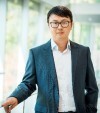 University of Michigan, Ann Arbor, USA
University of Michigan, Ann Arbor, USA
E-mail: liangdi@umich.edu
Di Liang is currently a Professor in Electrical Engineering and Computer Science Department at the University of Michigan, Ann Arbor. Prior that, he was a Director / Senior Staff Engineer in the Alibaba Group – US for two years, and was a Distinguished Technologist at Hewlett Packard Labs in Hewlett Packard Enterprise where he led the advanced R&D of silicon and compound semiconductor integrated photonics for energy-efficient optical interconnect, high-performance computing and other emerging applications during 2009-2021. He received his Bachelor degree in Optical Engineering from the Zhejiang University, China, and Master and PhD degrees in Electrical Engineering from the University of Notre Dame, US. He has authored and coauthored 1 edited book, 7 book chapters, over 270 journal and conference papers, and was granted by more than 50 patents with another 55+ pending. He is a Fellow of Optica (former OSA), and associate editor of Optica: Photonics Research and IEEE: Journal of Quantum Electronics.
Natalia Litchinitser
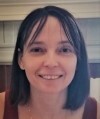 Duke University, USA
Duke University, USA
E-mail: natalia.litchinitser@duke.edu
Natalia Litchinitser is a Professor of Electrical and Computer Engineering and a Professor of Physics at Duke University. Her research focuses on linear and nonlinear optics in engineered nanostructures, metamaterials, topological photonics, as well as the engineering of the light beams themselves. Natalia M. Litchinitser earned her Ph.D. degree in Electrical Engineering from the Illinois Institute of Technology and a Master’s degree in Physics from Moscow State University in Russia. She completed her postdoctoral training at the Institute of Optics, the University of Rochester in 2000. Natalia Litchinitser previously was a Professor of Electrical Engineering at the University at Buffalo, The State University of New York, a Member of Technical Staff at Bell Laboratories, Lucent Technologies, and a Senior Member of Technical Staff at Tyco Submarine Systems. She authored 7 invited book chapters and over 250 journal and conference research papers. She is a Fellow of the American Physical Society (APS), a Fellow of Optica (formerly the Optical Society of America), a Senior Member of the IEEE and SPIE, a co-Chair of CLEO Fundamental Science and SPIE Nanoscience and Engineering Applications conferences in 2021-2022.
Jin Liu
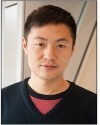 Sun Yat-Sen University, China
Sun Yat-Sen University, China
E-mail: liujin23@mail.sysu.edu.cn
Jin Liu is a professor of physics in Sun Yat-Sen University. He obtained his Ph.D. degree in 2012 from Technical University of Denmark under the supervision of Prof. Peter Lodahl. Before moving back to China, he worked with Dr. Kartik Srinivasan at National Institute of Standards and Technology (NIST) to develop integrated quantum photonic technologies. His current research activities cover integrated quantum photonics and nanophotonics by utilizing molecular beam epitaxy, semiconductor nanofabrication and cryogenic optical characterizations.
Yongfeng Lu
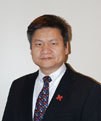 Department of Electrical and Computer Engineering, University of Nebraska Lincoln
Department of Electrical and Computer Engineering, University of Nebraska Lincoln
Lott Distinguished Professor, SPIE Fellow, LIA Fellow, OSA Fellow
E-mail: ylu2@unl.edu
Dr Yongfeng Lu is currently the Lott Distinguished Professor of Engineering at the University of Nebraska-Lincoln (UNL). He received his bachelor degree from Tsinghua University (China) in 1984 and M.Sc. and Ph.D. degrees from Osaka University (Japan) in 1988 and 1991, all in electrical engineering. From 1991 to 2002, he was a faculty in the Department of Electrical and Computer Engineering at National University of Singapore. He joined the Department of Electrical Engineering at UNL in 2002. He has more than 25 years of experience in processing and characterization of micro/nanostructured materials. His group has research projects funded by NSF, AFOSR, ONR, DTRA, DOE, DOT, NCESR, NRI, private companies, and foundations, with research expenditures over $25 million in the past a few years. His research has led to a number of commercialization and product developments. Dr. Lu has authored or co-authored over 300 journal papers and 350 conference papers. He served as the President of the Laser Institute of America (LIA) in 2014. He has been elected to SPIE fellow, LIA fellow, OSA fellow, and IAPLE. He has also served as chair and general chair for major international conferences in the field including the general congress chair for the International Congress of Applications of Lasers and Electro-Optics in 2007 and 2008, and general co-chair for LASE in Photonics West 2014-2017. He is also the recipient of the prestigious Schawlow Award of LIA in 2016.
Qingming Luo
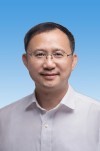 Hainan University, China
Hainan University, China
Qingming Luo is president of Hainan University, China. He received his bachelor’s degree in Technical Physics at Xidian University, Xi’an, China in 1986. He received M.Sc. degree in Optics and Ph.D degree in Physical Electronics and Optoelectronics at HUST in 1989 and 1993, respectively. He joined HUST as a lecturer in 1993 and then named as associate professor in 1995. He made a Postdoctoral Research Associate with Prof. Britton Chance at University of Pennsylvania in 1995-1997. He rejoined HUST and founded the Britton Chance Center for Biomedical Photonics in 1997. He was named the Cheung Kong Professor of Biomedical Photonics by the Ministry of Education of China in 1999 and received the National Science Fund for Distinguished Your Scholars of China in 2000. He holds 60 patents and has co-authored more than 200 papers in peer-reviewed journal, including Science, Nature Cell Biology, Nature Communications, PNAS, Optics Letters, Optics Express and Journal of Biomedical Optics, with an h-index of 40 according to Google Scholars. He is a Fellow of SPIE, IET and OSA.
Hervé Maillotte
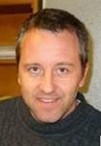 Hervé Maillotte is a CNRS research director and, since 2006, he has been Head of Optics Research Department and member of the management committee of FEMTO-ST Institute, one of the biggest French academic research lab in Engineering Sciences (http://www.femto-st.fr/en/). In 1990, he received the Ph.D. degree in Optics & Photonics from Université de Franche-Comté, Besançon, France, for a work on interferometric spatio-temporal control of stimulated Brillouin and Raman scattering in bulk third-order nonlinear media. In 1991, he joined the Laboratoire d’Optique P.M. Duffieux, Besançon, as a CNRS Researcher, where he initiated research on parametric amplification in optical fibres. He has also launched several other subjects in the fields of nonlinear guided or self-guided wave optics, like spatial soliton dynamics and soliton arrays in Kerr and photorefractive media, third-order nonlinear organic materials and Z-scan measurements, supercontinuum generation in conventional and microstructure fibers, and more recently optoacoustics in microstructure fibers. He has authored or co-authored more than 160 international publications, holds 2 European patents, and was awarded the “Gold Photon 2005” of OPTO fair along with a small French company for the development of a compact supercontinuum source. From 1997 to 2005, he has led the Nonlinear Optics Group of Optics Department at FEMTO-ST Institute. He has served in various scientific and organization committees of national and international conferences and summer schools and has been Scientific Coordinator of more than 20 national and international research contracts or cooperation programs. He also has served as Scientific Advisor or Evaluator in various funding, prospective, and evaluation bodies at national and international levels. He is currently holding several editorial positions in academic journals.
Hervé Maillotte is a CNRS research director and, since 2006, he has been Head of Optics Research Department and member of the management committee of FEMTO-ST Institute, one of the biggest French academic research lab in Engineering Sciences (http://www.femto-st.fr/en/). In 1990, he received the Ph.D. degree in Optics & Photonics from Université de Franche-Comté, Besançon, France, for a work on interferometric spatio-temporal control of stimulated Brillouin and Raman scattering in bulk third-order nonlinear media. In 1991, he joined the Laboratoire d’Optique P.M. Duffieux, Besançon, as a CNRS Researcher, where he initiated research on parametric amplification in optical fibres. He has also launched several other subjects in the fields of nonlinear guided or self-guided wave optics, like spatial soliton dynamics and soliton arrays in Kerr and photorefractive media, third-order nonlinear organic materials and Z-scan measurements, supercontinuum generation in conventional and microstructure fibers, and more recently optoacoustics in microstructure fibers. He has authored or co-authored more than 160 international publications, holds 2 European patents, and was awarded the “Gold Photon 2005” of OPTO fair along with a small French company for the development of a compact supercontinuum source. From 1997 to 2005, he has led the Nonlinear Optics Group of Optics Department at FEMTO-ST Institute. He has served in various scientific and organization committees of national and international conferences and summer schools and has been Scientific Coordinator of more than 20 national and international research contracts or cooperation programs. He also has served as Scientific Advisor or Evaluator in various funding, prospective, and evaluation bodies at national and international levels. He is currently holding several editorial positions in academic journals.
Andries Meijerink
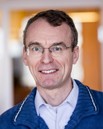 Prof. Dr. Andries Meijerink
Prof. Dr. Andries Meijerink
Professor of Solid State Chemistry, Utrecht University, The Netherlands
Phone: +31-30-2532202
E-mail: a.meijerink@uu.nl
Professor Andries Meijerink (1963) received his degree in Chemistry and his PhD degree (both Cum Laude) from Utrecht University, after which he joined the University of Wisconsin in Madison as a post-doctoral fellow. At the age of 32 he was appointed at the chair of Solid State Chemistry in the Debye Institute of the Utrecht University where he leads an active research group that focuses on the optical spectroscopy of lanthanide ions in solids and of nanocrystalline semiconductor quantum dots. In the field of lanthanide ions his work involves fundamental research on finding new concepts (e.g. downconversion) also related to applications in solar cells, LEDs and scintillators. The research on nanocrystalline quantum dots is aimed at unraveling the influence of quantum confinement and surface effects on the electronic structure of quantum dots through optical spectroscopy and using the quantum dots as labels in bio-imaging. The research has resulted in over 300 publications and 10 patents. The work is highly cited (H-index 62).
For his research Andries Meijerink has received national and international recognition, including prestigious awards like the DSM Award for Chemistry and Technology (1989), the Shell Incentive Award (1995), the Gold Medal of the Royal Dutch Chemical Society (1999) and the Centennial Award for Luminescence and Display Materials from the Electrochemical Society (2002). He is currently chairman of the International Conference of Luminescence. In 2009 he was elected into the Royal Dutch Academy of Sciences (KNAW).
Valentin Antonovich Orlovich
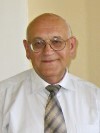 National Academy of Sciences of Belarus (NAS of Belarus), Belarus
National Academy of Sciences of Belarus (NAS of Belarus), Belarus
E-mail: v.orlovich@dragon.bas-net.by
Please click here to download detailed biography
Aydogan Ozcan
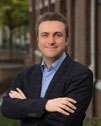 Dr. Aydogan Ozcan received his Ph.D. degree at Stanford University Electrical Engineering Department. After a short post-doctoral fellowship at Stanford University, he was appointed as a research faculty at Harvard Medical School, Wellman Center for Photomedicine in 2006. Dr. Ozcan joined UCLA in 2007 and he is currently the Chancellor’s Professor at UCLA and an HHMI Professor with the Howard Hughes Medical Institute, leading the Bio- and Nano-Photonics Laboratory at UCLA Electrical Engineering and Bioengineering Departments, and is also the Associate Director of the California NanoSystems Institute (CNSI) at UCLA.
Dr. Aydogan Ozcan received his Ph.D. degree at Stanford University Electrical Engineering Department. After a short post-doctoral fellowship at Stanford University, he was appointed as a research faculty at Harvard Medical School, Wellman Center for Photomedicine in 2006. Dr. Ozcan joined UCLA in 2007 and he is currently the Chancellor’s Professor at UCLA and an HHMI Professor with the Howard Hughes Medical Institute, leading the Bio- and Nano-Photonics Laboratory at UCLA Electrical Engineering and Bioengineering Departments, and is also the Associate Director of the California NanoSystems Institute (CNSI) at UCLA.
Dr. Ozcan holds 36 issued patents and more than 20 pending patent applications for his inventions in telemedicine, mobile health, nanoscopy, wide-field imaging, lensless imaging, nonlinear optics, fiber optics, and optical coherence tomography. Dr. Ozcan gave more than 40 plenary/keynote talks and 300+ invited talks and is also the author of one book, the co-author of more than 500 peer reviewed publications in major scientific journals and conferences. In addition, Dr. Ozcan is the founder and a member of the Board of Directors of Holomic/Cellmic LLC, which was named a Technology Pioneer by The World Economic Forum in 2015.
Prof. Ozcan received several major awards including the 2011 Presidential Early Career Award for Scientists and Engineers (PECASE), which is the highest honor bestowed by the United States government on science and engineering professionals in the early stages of their independent research careers. Dr. Ozcan received this prestigious award for developing innovative optical technologies and signal processing approaches that have the potential to make a significant impact in biological science and medicine; addressing public health needs in less developed countries; and service to the optical science community including mentoring and support for underserved minority undergraduate and graduate students. Dr. Ozcan also received the 2015 UCLA Postdoctoral Scholars Mentoring Award for his commitment to training and mentoring of postdoctoral researchers. In addition, Dr. Ozcan received the inaugural Rahmi M. Koc Science Medal, the International Commission for Optics (ICO) Prize, the inaugural SPIE BioPhotonics Technology Innovator Award, the Army Research Office (ARO) Young Investigator Award, SPIE Early Career Achievement Award, NSF CAREER Award, NIH Director’s New Innovator Award, the Office of Naval Research (ONR) Young Investigator Award, the IEEE Photonics Society Young Investigator Award and the MIT’s Technology Review TR35 Award for his seminal contributions to near-field and on-chip imaging, and telemedicine based diagnostics.
Prof. Ozcan is also the recipient of the 2016 IEEE Photonics Society Distinguished Lecturer Award, 2013 and 2015 Microscopy Today Innovation Awards, 2012 Popular Science Brilliant 10 Award, 2012 National Academy of Engineering (NAE) The Grainger Foundation Frontiers of Engineering Award, 2011 Innovators Challenge Award presented by the Rockefeller Foundation and mHealth Alliance, the 2010 National Geographic Emerging Explorer Award, the 2010 Bill & Melinda Gates Foundation Grand Challenges Award, the 2010 Popular Mechanics Breakthrough Award, the 2010 Netexplorateur Award given by the Netexplorateur Observatory & Forum in France, the 2010 PopTech Science and Public Leaders Fellowship, the 2009 and 2016 Wireless Innovation Award organized by the Vodafone Americas Foundation as well as the 2008 Okawa Foundation Award, given by the Okawa Foundation in Japan.
Prof. Ozcan was selected as one of the top 10 innovators by the U.S. Department of State, USAID, NASA, and NIKE as part of the LAUNCH: Health Forum organized in 2010. He also received the 2012 World Technology Award on Health and Medicine, which is presented by the World Technology Network in association with TIME, CNN, AAAS, Science, Technology Review, Fortune, Kurzweil and Accelerosity.
Dr. Ozcan is elected Fellow of SPIE, OSA, IEEE, AIMBE, RSC and the Guggenheim Foundation, and is a Lifetime Member of AAAS, SPIE and OSA.
http://innovate.ee.ucla.edu//prof.-ozcan-brief-biosketch.html
http://org.ee.ucla.edu/
Cheng-Wei Qiu
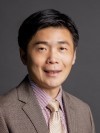 National University of Singapore, Singapore
National University of Singapore, Singapore
E-mail: chengwei.qiu@nus.edu.sg
Prof. Cheng-Wei Qiu was appointed Dean’s Chair Professor twice (2017-2020 & 2020-2023) in College of Design and Engineering, National University of Singapore. He is Fellow of Optica, SPIE and The Electromagnetics Academy, US. He is well known for his research in structured light and metasurfaces. He has published 460+ peer-reviewed journal papers, including Science(3), Nature(5), Nature Materials(2)/Nature Nanotechnology(7)/Nature Photonics(8)/Nature Electronics(4)/Nature Physics(2), Nature Communications(32), Science Advances(14), Physical Review Letters(21), Nature Reviews Materials(3), Chemical Reviews(4), Advanced Materials(32), IEEE Transactions(16), PNAS(7), Nano Letters(29)/ACS Nano(17), eLight(4). He was the recipient of the SUMMA Graduate Fellowship in Advanced Electromagnetics in 2005, IEEE AP-S Graduate Research Award in 2006, URSI Young Scientist Award in 2008, NUS Young Investigator Award in 2011, MIT TR35@Singapore Award in 2012, Young Scientist Award by Singapore National Academy of Science in 2013, Faculty Young Research Award in NUS 2013, SPIE Rising Researcher Award 2018, Young Engineering Research Award 2018, and Engineering Researcher Award 2021 in NUS, World Scientific Medal 2021 by Institute of Physics Singapore, and Achievement in Asia Award (Robert T. Poe Prize) 2023 by International Organization of Chinese Physicists and Astronomers.
He was Highly Cited Researchers in 2019, 2020, 2021, 2022 by Web of Science. His work has been selected as Top 10 Breakthroughs 2020 by Physics World, and Optics in 2021 by Optica. As an overseas partner, he has been awarded China’s Top 10 Optical Breakthroughs for 4 times (2019, 2020, twice in 2021). He has served as Associate Editor for various journals such as JOSA B, PhotoniX, Photonics Research. Now he serves as Editor-in-Chief for eLight. He also serves in Editorial Board of Light: Science & Applications, Editorial Advisory Board for Laser and Photonics Reviews, Advanced Optical Materials, and ACS Photonics.
He has mentored next generation of academic scientists and industrial entrepreneurs. 26 out of his former phd students and postdoctoral research fellows have been Assistant, Associate and Full Professors, including Distinguished Young Scholars of NSFC (Overseas), Humboldt Scholar, and Nanyang Assistant Professor in Nanyang Technological University. Some of his former phd students have been CTO and CEO of high-tech companies in Singapore and China.
Aleksandar D. Rakić
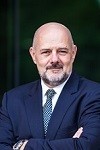 Aleksandar D. Rakić leads the Photonics and Microwave Engineering group at The University of Queensland focusing on the development of technologies for sensing and imaging across the electromagnetic spectrum including microwave, terahertz wave and optical systems.
Aleksandar D. Rakić leads the Photonics and Microwave Engineering group at The University of Queensland focusing on the development of technologies for sensing and imaging across the electromagnetic spectrum including microwave, terahertz wave and optical systems.
Rakić Lab pioneered the development of several world’s first laser-feedback interferometric sensors including systems based on monolithic vertical-cavity surface-emitting laser arrays (VCSELs), blue-green lasers, terahertz quantum cascade lasers and mid-infrared interband cascade lasers. His laboratory focuses is on the development of sensing and imaging systems exploiting the THz spectrum for applications from security and defence to in vivo biomedical imaging. His other principal contributions relate to the design and characterization of surface-emitting optoelectronic devices (VCSELs and light emitting diodes).
Aleksandar D. Rakić was appointed an Invited Professor at the University of Toulouse, (2007-2016), and Visiting Professor at the University of Leeds (2012). He is currently Professor of Photonics within the School of IT and Electrical Engineering, The University of Queensland, Associate Dean (External Engagement) in Faculty of Engineering Architecture and Information Technology, and Deputy Director of The University of Queensland Precision Sensing Initiative.
Daniel Razansky
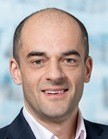 University and ETH Zurich
University and ETH Zurich
Institute for Biomedical Engineering
Wolfgang-Pauli-Str. 27
8093 Zurich, Switzerland
Group Website: http://www.razanskylab.org/
Daniel Razansky is Full Professor of Biomedical Imaging with double appointment at the Faculty of Medicine, University of Zurich (UZH) and Department of Information Technologies and Electrical Engineering, ETH Zurich, where he also serves as Director of the joint Animal Imaging Center of the ETH and UZH. He earned PhD in Biomedical Engineering and MSc in Electrical Engineering from the Technion - Israel Institute of Technology. After a short postdoctoral fellowship in bio-optics at the Harvard Medical School in 2006-2007, he was the Director of Multi-Scale Functional and Molecular Imaging Lab and Professor of Molecular Imaging Engineering at the Helmholtz Center and Technical University of Munich. Prof. Razansky’s Lab pioneered a number of imaging technologies successfully commercialized worldwide, among them the multi-spectral optoacoustic tomography (MSOT) and hybrid optoacoustic ultrasound (OPUS). He has authored over 200 peer-review journal articles and holds 15 patented inventions in bio-imaging and sensing. He delivered more than 150 invited, keynote and plenary lectures worldwide. Prof. Razansky’s research has been recognized by the German Innovation Prize and multiple awards from the ERC, NIH, DFG and HFSP. He is a co-founding Editor of the Photoacoustics journal and serves on Editorial Boards of a number of journals published by Elsevier, IEEE and AAPM. He is an elected Council Member of the European Society for Molecular Imaging (ESMI), serves on the IEEE Technical Committee on Biomedical Imaging and Image Processing and has chaired numerous international conferences of the OSA, WMIS, ESMI and IFMBE. He is also an elected Fellow of the OSA and SPIE.
Manijeh Razeghi
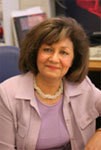 Manijeh Razeghi is Walter P. Murphy Professor and Director Center for Quantum Devices, Department of Electrical Engineering and Computer Science, Northwestern University. She is a pioneer in the area of III-V compound semiconductors and optoelectronic devices from the deep ultraviolet to the far infrared spectral bands, including in particular InP and GaAs based semiconductors and devices, which were at the heart of the optical fiber telecommunication revolution of the late 20th Century and the rise of the information age. She is fellow of IEC, APS, IEEE, IOP, OSA, SPIE, SWE, MRS and other professional society associations. She has authored and co-authored more than 1000 papers, ~700 plenary, keynote and invited conference presentations, 18 books and 31 book chapters. She was granted more than 55 patents and more than 20 in pending. She is chair and organizing committee of many international conferences. She also serves as associate editor or editorial board member of many academic journals, such as Applied Physics A, Journal of Nanoscience and Nanotechnology, Journal of Nanotechnology.
Manijeh Razeghi is Walter P. Murphy Professor and Director Center for Quantum Devices, Department of Electrical Engineering and Computer Science, Northwestern University. She is a pioneer in the area of III-V compound semiconductors and optoelectronic devices from the deep ultraviolet to the far infrared spectral bands, including in particular InP and GaAs based semiconductors and devices, which were at the heart of the optical fiber telecommunication revolution of the late 20th Century and the rise of the information age. She is fellow of IEC, APS, IEEE, IOP, OSA, SPIE, SWE, MRS and other professional society associations. She has authored and co-authored more than 1000 papers, ~700 plenary, keynote and invited conference presentations, 18 books and 31 book chapters. She was granted more than 55 patents and more than 20 in pending. She is chair and organizing committee of many international conferences. She also serves as associate editor or editorial board member of many academic journals, such as Applied Physics A, Journal of Nanoscience and Nanotechnology, Journal of Nanotechnology.
Her degrees, experience, awards and honors are as follows,
Degrees:
- 1980 Docteur d'etat es Sciences Physiques, Universite de Paris, France
- 1977 Docteur 3eme Cycle, Solid State Physics, Universite de Paris, France
- 1976 DEA, Science des Materiaux, Universite de Paris, France
Academic and Industrial Experience:
- 1993-present Adjunct Professor, Optical Sciences Center, University of Arizona
- 1991-present Walter P. Murphy Professor of Electrical and Computer Engineering, and Director, Center for Quantum Devices, Northwestern University, Evanston, IL
- 1986-1991 Head, Exploratory Materials Lab, Thomson-CSF, Orsay, France
- 1986 Invited Professor, University of Michigan-Ann Arbor, MI
- 1985-1991 Visting Professor, Ecole Polytechnique, Lausanne, Switzerland
- 1981-1985 Senior Research Scientist, Thomson-CSF, Orsay, France
Awards and Honors:
- Elected Lifetime Fellow of Institute of Electrical and Electronics Engineers (IEEE) - 2017
- Jan Czochralski Gold Medal - 2016
- IBM Faculty Award - 2013
- Elected Lifetime Fellow of Materials Rearch Society (MRS) - 2008
- Elected Fellow of Institute of Electrical and Electronics Engineers (IEEE) - 2005
- Elected Fellow of Institute of Physics (IOP) - 2005
- Elected Fellow of American Physical Society (APS) - 2004
- Elected Fellow of Optical Society of America (OSA) - 2004
- R.F. Bunshah Award from Intal Conference on Metallurgical Coatings and Thin Films - 2004
- Photonics West Optoelectronics 2004 Symposium Best Paper Award - 2004
- Elected Fellow of Optical Society of America( OSA) - 2003
- Nominated for Northwestern University McCormick Teacher of the Year Award - 2003
- Elected Fellow of International Engineering Consortium (IEC) - 2003
- Elected Fellow of Society of Photo-Optical Instrumentation Engineers (SPIE)- 2000
- Photonics West Optoelectronics 1998 Symposium Best Paper Award - 1998
- Elected Fellow of Society of Women Engineers - 1995
- Society of Women Engineers (SWE) Achievement Award - 1995
- IBM Europe Science and Technology Prize - 1987
- Numerous Best Paper Awards
Expert from united nation to telebras-Brazil and many others.
Junsuk Rho
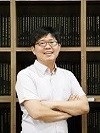
Pohang University of Science and Technology (POSTECH), Korea
Department of Mechanical Engineering & Department of Chemical Engineering
E-mail: jsrho@postech.ac.kr
Web: https://photonics.postech.ac.kr/
Dr. Junsuk Rho (鲁埈锡) is currently a Mu-Eun-Jae (无垠斋) endowed Chair Professor and Young Distinguished Professor in the Department of Mechanical Engineering and the Department of Chemical Engineering at Pohang University of Science and Technology (POSTECH), Korea. He is also the director of POSCO-POSTECH-RIST Convergence Research Center for Flat Optics and Metaphotonics. Before joining POSTECH, he received a degree his B.S. (2007) and M.S. (2008) in Mechanical Engineering at Seoul National University, Korea and the University of Illinois, Urbana-Champaign, respectively. After getting Ph.D. (2013) in Mechanical Engineering with designated emphasis on Nanoscale Science & Engineering from the University of California Berkeley, he had worked as a postdoctoral fellow in Materials Sciences Division at Lawrence Berkeley National Laboratory and the Ugo Fano Fellow in Nanoscience and Technology Division at Argonne National Laboratory. His research is focused on developing novel nanophotonic materials and devices based on fundamental physics and experimental studies of deep sub-wavelength light-matter interaction. Dr. Rho has published more than 200 high impact peer-reviewed journal papers including Science and Nature. He also has presented keynote and invited talks more than 350 times at the world-leading institutes and international conferences/workshops, as well as having 6 US patents and 45 Korea patents. He has received honorable awards including the OSA Milton/Chang Award, the SPIE Scholarships (2011 & 2012), MRS Student Award (2012), US DOE Argonne Named Fellowship (2013-2016), Edmund Optics Educational Award (2015), the OSK Young Investigator Award (2016), SPIE Rising Researcher Award (2017), Korean MSIP Minister’s Commendation (2017), Korean MSIT Minister’s Commendation (2019), OSA IMCO Young Scientist Award (2019), Korean Presidential Early Career Award for Scientists and Engineers (2019), Springer-Nature MINE Young Scientist Award (2020), Elsevier MEE/MNE Young Investigator Award and Lectureship (2020), MDPI Micromachines Young Investigator Award (2020), OSK Haerim (海林) Photonics Award (2021). He also serves as the editors for Micsosystems and Nanoengineering (Springer-Nature), Nanophotonics (De Gruyter), Scientific Reports (Springer-Nature), Nano Convergence (Springer), Current optics and Photonics (Optical Society of Korea), Journal of Micro- and Nano-Manufacturing (ASME), Micro and Nano Engineering (Elsevier), PhotoniX (Springer), Photonics Insights (Chinese Laser Press), Frontiers of Optoelectronics (Springer), iScience (Cell Press).
Qing Hai Song
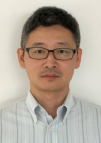 Harbin Institute of Technology, China
Harbin Institute of Technology, China
Dr. Qinghai Song, Professor at Harbin Institute of Technology. He received the B.S. and Ph.D. degrees in physics from Fudan University in 2002 and 2007, respectively. After postdoctoral researches at Northwestern University, Yale University and Purdue University, he joined the faculty of Harbin Institute of Technology in 2011. His research interests focus on the control and manipulation of light in micro- & nano-structures. He has authored or co-authored more than 200 papers and delivered over 50 invited talks/seminars in international/national conferences.
Chang-Pu Sun
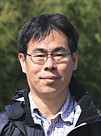 Beijing Computational Science Research Center,
Beijing Computational Science Research Center,
No. 3 He-Qing Road, Hai-Dian District, Beijing 100084, China
Phone: +86-10-82687033,
Fax: +86-10-82687022
E-mail: cpsun@csrc.ac.cn; sunchangpu@gmail.com
Web: http://www.csrc.ac.cn/~suncp
Professor Chang-Pu Sun, a theoretical physicist, currently is a chair professor at Beijing Computational Science Research Center (CSRC), and the Chinese Academy of Engineering Physics (CAEP). He obtained his PhD in 1992 at the Chern Institute of Mathematics, and then became a professor of physics in Northeast Normal University (1992-2011) and Institute of Theoretical Physics, Chinese Academy of Sciences (CAS). In an adjunct position he even was a Chair Professor of Theoretical Physics of Nankai University from 2003 to 2008.
He was selected as an Academician of CAS in 2009, and a Fellow of TWAS (the World Academy of Sciences) in 2011. He achieved many prizes including the National Award for Natural Sciences in China, the First Order Prize for Excellence Young Scientist in Chinese Academy of Sciences, the National Prize of Science and Technology for Yang Scientists and Citation Classic Award by SCI et al. He is also honored by the National Model Employee of China.
He has published over than 260 articles on peer refereed journals up to date, which have been cited over 7000 times. His article on q-deformed bosons is one of the pioneering articles in mathematical physics, which was enlisted on "Most Cited Journal Article on Mathematical Physics" by the Stanford University Library in 2001. His researches on quantum adiabatic approximation and induced gauge fields, begun 20 years ago, have redrawn attentions in the field quantum optics with cold atoms, which has motivated new advances including scheme of separating chiral molecules by utilizing the Stern-Garlach effect of induced gauge fields by himself and his collaborators in 2007. His research on the dynamical sensitivity of quantum phase transitions has drawn much attention since 2006, because of its connections to various research fields in physics, such as quantum measurement, quantum chaos and condensed matter physics. Some experiments based on NMR et al have well fit this theoretical prediction.
Currently, his research interests include probing mathematical structures behind the dynamics of physical systems, such as quantum groups related to the Yang-Baxter equation, Berry geometric phase related to general gauge symmetry and ?nite-size thermodynamic systems far off equilibrium. He explored the fundamental aspects of quantum mechanics, e.g., open quantum system approaches to quantum measurement and decoherence, and quantum statistical thermodynamics. His researches are partially oriented to future quantum technologies, such as quantum information processing, quantum coherent devices and also the new generation of energy based on the artificial photosynthesis with quantum effects. He yearn for a "down-to-earth" understanding of fundamental problems in quantum mechanics in association with the most recent experiments about circuit QED using super-conducting systems, optomechanics with micro/nano-mechanical resonators, the photon transport in low-dimensional confined structure, and ultra-cold atoms in Bose-Einstein condensate.
Joseph J. Talghader
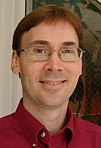 University of Minnesota, U.S.A.
University of Minnesota, U.S.A.
E-mail: joey@umn.edu
Joseph Talghader obtained his B.S. in electrical engineering from Rice University in 1988. He was awarded an NSF Graduate Fellowship and attended the University of California at Berkeley where he received his M.S. in 1993 and Ph.D. in 1995. In graduate school, Dr. Talghader studied semiconductor lasers and microfabrication techniques and developed assembly techniques for vertical-cavity surface-emitting lasers. From 1992 to 1993 he worked at Texas Instruments as a Process Development Engineer, where he investigated EEPROM memory design and reliability issues. After graduating from Berkeley in 1995, he joined Waferscale Integration where he developed microfabrication processes for high-density nonvolatile memory devices. In 1997 Dr Talghader joined the faculty at the University of Minnesota as an Assistant Professor and was later promoted to full Professor.
Chuanshan Tian
 Fudan University, China
Fudan University, China
Department of Physics
E-mail: cstian@fudan.edu.cn
Dr. Chuanshan Tian is currently a professor at Fudan University. He received the B.S. and Ph.D. degrees in physics from Fudan University in 2001 and 2006, respectively. From 2006 to 2010, he has been a postdoctoral researcher at University of California at Berkeley. At the end of 2010, he joined the physics faculty at Fudan University. His research focuses on experimental study on the physics and chemistry at interface via development of novel surface-specific optical tools.
Karl Unterrainer
 Karl Unterrainer received the MS degree in Physics from the University of Innsbruck in 1986, and his Ph.D. degree in 1989 for his work on stimulated far infrared emission. Subsequently, he worked as a research assistant at the Institute for Experimental Physics and developed a far infrared tunable cyclotron resonance laser. In 1992 he became assistant professor at the Technical University Vienna. In 1994 and 1995 he worked as a visiting researcher at the Quantum Institute, University of California, Santa Barbara, USA. He used nonlinear THz spectroscopy to study intersubband relaxation rates and observed the inverse Bloch oscillator effect. From 1997 till 2003 he was associate professor at the Technical University Vienna. Since 2004 he is full professor at the Photonics Institute, Technische Universität Wien, Austria. He has been the director of the Center of Micro & Nanostructures and of the Photonics Institute, and served as dean of the Faculty of Electrical Engineering and Information Technology, TU Wien. Since 2006 he is coordinating the FWF SFB research cluster "Infrared Optical Nanostructures IR-ON". His main research areas are nano photonics, semiconductor nanostructures, time-resolved THz spectroscopy, and the development of THz devices. He is author or coauthor of more than 300 scientific articles.
Karl Unterrainer received the MS degree in Physics from the University of Innsbruck in 1986, and his Ph.D. degree in 1989 for his work on stimulated far infrared emission. Subsequently, he worked as a research assistant at the Institute for Experimental Physics and developed a far infrared tunable cyclotron resonance laser. In 1992 he became assistant professor at the Technical University Vienna. In 1994 and 1995 he worked as a visiting researcher at the Quantum Institute, University of California, Santa Barbara, USA. He used nonlinear THz spectroscopy to study intersubband relaxation rates and observed the inverse Bloch oscillator effect. From 1997 till 2003 he was associate professor at the Technical University Vienna. Since 2004 he is full professor at the Photonics Institute, Technische Universität Wien, Austria. He has been the director of the Center of Micro & Nanostructures and of the Photonics Institute, and served as dean of the Faculty of Electrical Engineering and Information Technology, TU Wien. Since 2006 he is coordinating the FWF SFB research cluster "Infrared Optical Nanostructures IR-ON". His main research areas are nano photonics, semiconductor nanostructures, time-resolved THz spectroscopy, and the development of THz devices. He is author or coauthor of more than 300 scientific articles.
Paul Urbach
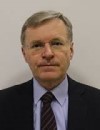 TU Delft, The Netherlands
TU Delft, The Netherlands
After obtaining a PhD at Groningen University, Paul Urbach became Research Scientist and then Principle Scientist at Philips Research Laboratory in Eindhoven, The Netherlands. In 2000 he became part-time professor Diffraction Optics at Delft University of Technology and in 2008 he became group leader of the Optics Research Group of this university. His research interests are diffraction theory in general and direct and inverse problems of high-resolution optical imaging in particular. He has contributed to many national and European research projects and has led several big international and national research consortia. He has been member of the board of the Royal Dutch Mathematical Society, the board of the European Optical Society and has been president of the European Optical Society in 2012-2014 and again in 2017-2018. Currently he is member of the board of PhothonicsNL. From 2012-2022 he was member of the Advisory Board of the Minister of Economic Affairs on metrology. He is scientific director of the Dutch Optics Centre, a joint initiative of Delft University of Technology and TNO to define and stimulate joint research projects between academy and industry and which sustains an ecosystem comprising of more than 200 optical companies. He also leads a new national initiative on continuing education in optics for industry.
Qijie Wang
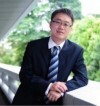 Nanyang Technological University, Singapore
Nanyang Technological University, Singapore
Email: qjwang@ntu.edu.sg
Professor Qijie Wang is a professor and the Associate Chair (Research) at School of Electrical and Electronic Engineering, Nanyang Technological University, Singapore. He also holds a joint appointment at School of Physical and Mathematical Sciences at the same University. His research field is in the mid-infrared and Terahertz Photonics. The main interests of our research are broadly in optoelectronic technologies from the fundamental studies to various applications, specifically on investigating theoretically and experimentally fundamental light-matter interactions in the infrared regimes in new materials and new designs and developing novel photonic and optoelectronic devices and systems.
He has published/co-published more than 230 papers in top international journals. He was the recipient of the IES (Institution of Engineers Singapore) Prestigious Engineering Achievement Team Award of Singapore Twice in 2005 and 2017, respectively, 30th World Culture Special Recognition Award 2013, the prestigious Singapore Young Scientist Award 2014, Nanyang Research Award (young investigator) NTU 2015, and the Institute of Physics Singapore ARC Sciences Nanotechnology Medal and Prize 2021. He was elected as fellow of Optical Society of America (OSA) in 2019.
Xiaojun Wang
 Department of Physics
Department of Physics
Georgia Southern University
Statesboro, Georgia 30460, USA
Tel: +1 912-478-5503
Fax: +1 912-478-0471
E-mail: xwang@georgiasouthern.edu
Xiaojun Wang graduated from Jilin University with a BS degree in Physics (1981) and obtained his M.S. degrees In Chinese Academy of Sciences (1985) and Florida Institute of Technology (1987). He earned his Ph.D. in Physics from The University of Georgia in 1992. After working as a postdoc at Oklahoma State University and University of California-Irvine (NIH Postdoctoral Fellow), he joined the Department of Physics, Georgia Southern University, in 1995, where he currently serves as a full professor. His research areas are optical properties of solids, phosphors, and biomedical optics and his projects have been financially supported by NSF, NIH, NSFC, DOE/ORNL and other funding agencies. He has published 4 book chapters and more than 190 journal papers (h-index = 38, Google Scholar) and holds 4 US and 2 China patents. He is now the Editor for Luminescence for Materials Research Bulletin and serves as an editorial board member for Journal of Rare Earths and Chinese Journal of Luminescence. In addition, he was a guest editor for several proceedings of international conferences. He has served the IPC member for International Conference of Luminescence for past ten years.
Clive Woods
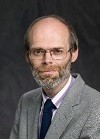 University of South Alabama, USA
University of South Alabama, USA
Email: cwoods@lsu.edu
Web: https://www.southalabama.edu/facultypages/rcwoods/index.htm
Dr. R.C. Woods moved to the University of South Alabama in 2016 as Associate Dean of Engineering responsible for research and graduate affairs. He was born in Leicester, England, and studied at New College in the University of Oxford which awarded him Bachelor’s and Master’s degrees. At Oxford’s world-famous Clarendon Laboratory, he researched magnetic resonance and related phenomena in rare earth metal alloys, for which the University of Oxford awarded him the degree of Doctor of Philosophy. Next followed a period as a Postdoctoral Research Assistant in the University of Oxford’s Engineering Science Department, where he worked on surface-acoustic wave signal-processing devices.
Following this, he was Senior Scientist at Plessey Research (Caswell) Ltd., Towcester, specializing in semiconductor lasers and LED systems. He was then a Lecturer and subsequently Senior Lecturer (positions widely regarded as equivalent to Assistant and Associate Professor respectively in the U.S.A.) in Electronic and Electrical Engineering at the University of Sheffield. During this period, his research mostly concerned compound semiconductor devices. In 1989 he was awarded a British Association Fellowship, for several years he served as Associate Editor of the IEE Electronics and Communication Engineering Journal, and in 1995 he was Professeur Invité at the Institut National des Sciences Appliquées de Lyon, France. He was also a co-founder of the Sheffield MEMS Unit. He was appointed Full Professor of Electrical and Computer Engineering at Iowa State University, Ames, Iowa, in 2002. Moving again in 2006, he became the most successful Department Chairman in his Department’s history when under his leadership his Department achieved its best-ever performance before or since.
In 2010 he was appointed Japan Program Director in the Office of International Science and Engineering at the world’s most prestigious research funding agency, the National Science Foundation (NSF) then located in Arlington, Virginia, and subsequently took additional responsibility for the U.S. collaborative basic research programs in Korea, New Zealand, Australia, Mongolia, and China (Taiwan). He also led the NSF CNIC program for catalyzing new international collaborations, and was a member of the NSF Optics and Photonics Roadmap working group and the International Science and Engineering Strategic Planning group. For his work at NSF he received the NSF Director’s Award for Collaborative Integration for “exceptional teamwork in representing a model for a truly collaborative activity across the Foundation involving science, administration, and science diplomacy.”
Yunfeng Xiao
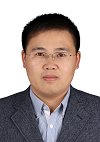 School of Physics, Peking University
School of Physics, Peking University
URL: www.phy.pku.edu.cn/~yfxiao/
Email: yfxiao@pku.edu.cn
Dr. Yun-Feng Xiao, distinguished “Boya” Professor at Peking University. He received the B.S. and Ph.D. degrees in physics from University of Science and Technology of China in 2002 and 2007, respectively. After a postdoctoral research at Washington University in St. Louis, he joined the faculty of Peking University in the January of 2009. His research interests lie in the fields of whispering-gallery microcavity optics and photonics. So far, he has authored or co-authored more than 150 refereed journal papers with over 5000 citations, and has delivered over 100 invited talks/seminars in international/national conferences. He was awarded the Wang Daheng Optics Prize in 2018, the Rao-Yutai Prize in physics in 2019, and the Rao-Yutai Prize in Fundamental Optics in 2013. He was elected as OSA fellow in 2018.
Peng Xue
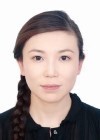 Beijing Computational Science Research Center, China
Beijing Computational Science Research Center, China
Email: gnep.eux@gmail.com
Prof. Peng Xue received her Doctor of Philosophy degree in physics at the University of Science and Technology of China in July 2004. Currently, she is a full professor at Beijing Computational Science Research Center, in China. Before she joined Beijing Computational Science Research Center in April of 2018, she worked as a Postdoctoral Fellow at the Institute for Quantum Optics and Quantum Information, Innsbruck, for two years, and two years later as a Postdoctoral Associate at the Institute of Quantum Information Science, University of Calgary for three years, a full professor at Southeast University, China, for nine years. Her main research area is quantum information science and quantum optics. In particular, she has studied quantum information theory, quantum cryptography, quantum device modeling, quantum algorithms and complexity theory, and quantum simulations. Furthermore, she has a broad interest and solid background in many other research areas such as atomic molecular optics, condensed matter physics, computational sciences, and so on. She has published more than 130 papers with collaborators on these topics in the refereed top journals such as Nature Physics, Nature Communications, Science Advances, Physical Review Letters, and several talks at international conferences and colloquia. She is an editorial board member of Light: Science and Application, Physical Review A, and Mathematics. She has served on several international conference committees as Program or General Chair, including CLEO (2022-2024), and Conference Committee Member of AQIS (2018-2021).
Kiyoul Yang
 Harvard University, USA
Harvard University, USA
Email: kiyoul@seas.harvard.edu
Kiyoul Yang has been on the faculty of the John Paulson School of Engineering and Applied Science at Harvard University as an Assistant Professor since 2023. He completed his Ph.D. at Caltech in 2018 and conducted Postdoctoral research at Stanford University. His research includes nonlinear integrated photonics, optoelectronic systems, nanofabrication, and photonic inverse design for applications in computing, metrology, and communications. He received the OSA Paul F. Forman Team Engineering Excellence Award for a 2-photon optical clock in 2020.
Mengjian Zhu
 National University of Defense Technology, China
National University of Defense Technology, China
Email: zhumengjian11@nudt.edu.cn
Research Field: Graphene and two-dimensional materials, Quantum optoelectronics, Light-matter interaction
Prof. Mengjian Zhu’s research interests include quantum transport properties and light-matter interaction in graphene, 2D materials and their van der Waals heterostructures, especially the emergent quantum phenomena from superconductivity to ferromagnetism/ferroelectricity. He is also intertest in optical spectroscopy of van der Waals quantum materials. In recent 5 years, he and his group have published more than 10 Nature series journal papers, including 2 Nature Physics, 2 Light: Science & Applications, and 4 Nature Communications, with a total citation > 2500 and a h-index of 21.
Education Background
● Sep 2013 – Jan 2017, The University of Manchester, UK; Ph.D. in Condensed Matter Physics
Supervisor: 2010 Nobel Laurates in physics, Prof. Sir Andre Geim & Prof. Sir Kostya Novoselov
Thesis: Ballistic graphene Josephson junctions and vertical tunnelling transistors based on graphene heterostructures
● Sep 2011 – Sep 2013, National University of Defense Technology, China; M.S. in Materials Science and Engineering
● Sep 2007 – Jun 2011, University of Science and Technology Beijing, China; B.S. in Materials Science and Engineering,
